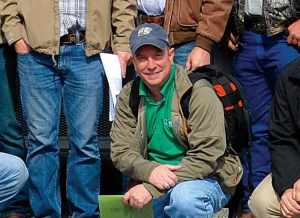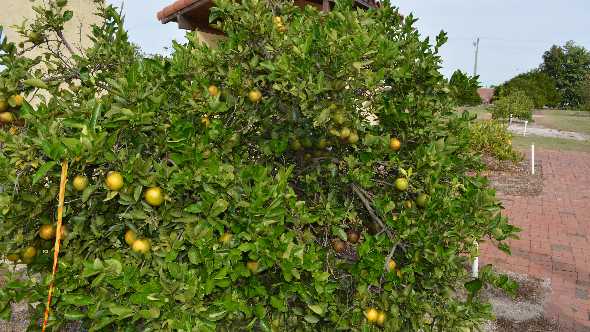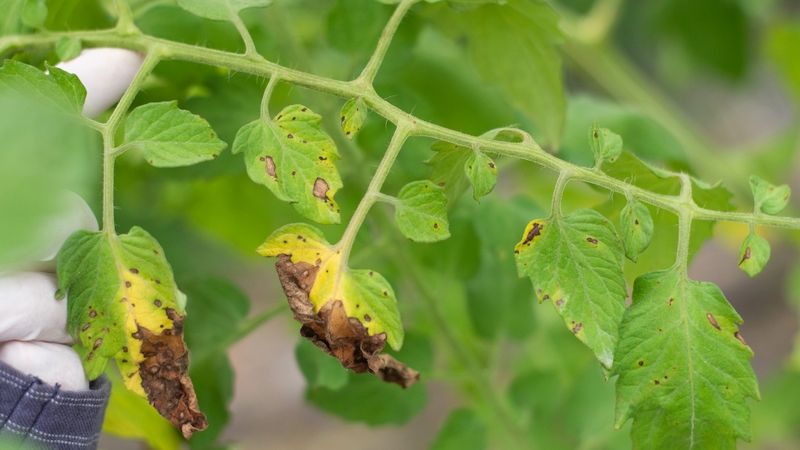Southwest Florida Citrus Bus Tour Yields Learning Opportunity
 Recently, the Peace River Valley Citrus Growers Association hosted its annual bus tour. It was a great day jam-packed with relevant information.
Recently, the Peace River Valley Citrus Growers Association hosted its annual bus tour. It was a great day jam-packed with relevant information.
LeAnna Himrod welcomed us for the first time as the new executive director of the association after taking on the job when Barbara Carlton retired from the post after 20 years of service.
Yara’s Jerry Southwell welcomed the group as well on the eve of his retirement after 25 years of service to the company. Southwell introduced his replacement Eric Waldo, who told us he was excited about the new job. Yara has sponsored the bus tour for a number of years.
Antibiotics In Action
Our first stop was at the Citrus Arboretum in Winter Haven where more than 200 citrus cultivars or citrus relatives are maintained. It was established in 1975 and is maintained by the FDACS Bureau of Citrus Budwood Registration. The purpose of the facility is to ensure valuable germplasm is available for study in Florida.

This is the “miracle tree” at the Citrus Arboretum in Winter Haven. It has bounced back from severe HLB symptoms after injections of antibiotics.
Photo by Frank Giles
But, a quick stroll around the 6.5-acre property made it apparent it too is suffering the ravages of HLB like everywhere else in the state. The staff there has been testing a number of antibiotic treatments to “keep the trees alive.”
The FDACS staff told us this is only a demonstration and that no replicated trials are being conducted there. But, the antibiotic treatments are showing some positive results in rehabbing some trees that were in pretty bad shape. The department has secured funding for replicated trials in a nearby grove in the coming year.
Exclusionary Tactics
Next, we stopped by the Citrus Research and Education Center in Lake Alfred to see a new screenhouse planting of citrus by Dr. Arnold Schumann, a soil and water scientist with UF/IFAS. His team is researching ways to produce fresh fruit in an HLB-free environment.

Photo by Frank Giles
The approach utilizes an advanced citrus production system (ACPS) to encourage rapid growth and high production. Schumann has worked with ACPS in the past, but he said one limiting element has always been total psyllid control. This is where a screenhouse comes into play. Its job? To totally exclude the psyllid from the production environment.
Trees in the screenhouse are planted in pots and are grown with intensive hydroponics for rapid growth and high yields. Schumann gave us an example of the this approach from Fruit World in California. Citrus trees were planted in a 46-acre hydroponic block at 1,936 trees per acre. That’s a lot of trees, but the planting yielded 1,600 boxes of fruit per acre at four years old.
Schumann has built a 1.3-acre screenhouse, which will allow for an acre planting of citrus under cover. For comparison, another acre was planted outdoors right next to the screenhouse using the same system.
After the first year, the outdoor planting is 3% to 5% infected with HLB even with good psyllid control. Meanwhile, the indoor trees are twice as large as the trees outside. Schumann noted this system was constructed with off-the-shelf components and might have a fit for fresh fruit, particularly smaller gift fruit or organic growers.
Rooting For Rootstocks
Jude Grosser, a professor for plant cell genetics with UF/IFAS, is a veritable citrus rootstock evangelist. If you ever want to meet someone passionate about his work, look no further than Grosser.
We stopped by Grosser’s St. Helena trial, which is a 20-acre rootstock trial on property purchased and owned by Orie Lee. The main purpose of the St. Helena trial is to evaluate a large collection of rootstocks, including candidates for ACPS (tree size controlling rootstocks needed for the high-density plantings) in efforts to identify rootstocks that could be used for sustainable and profitable citriculture as we move forward in the HLB world.
“Since the trial is now 92% infected with HLB, we are hoping to identify rootstocks that can grow through the disease with continued production of fruit with adequate quality for NFC juice,” said Grosser. “We also are trying to learn how to grow trees in the HLB environment — using evolving controlled-release fertilizer combinations and daily irrigation — to provide constant feeding and to minimize any stress on the trees.”
Winged Combatants
Our final stop was at the FDACS Dundee Biological Control Laboratory where tiny Tamarixa radiata wasp are being raised to help combat the Asian citrus psyllid (ACP). The wasps target the psyllids while they are in the nymph stage. A single female Tamarixa can kill more than 500 ACP in her lifetime of about one month.
It is a fascinating process to see how the psyllids are raised on orange jasmine plants and then sent off to meet their maker at the hands (or, in this case, the ovispositor) of the Tamarixa. After rearing, they are released in abandoned groves, in psyllid hot spots, and organic groves.
FDACS is currently raising more than 150,000 wasps per month, and with new facilities being added, numbers will top 450,000 per month soon. Good! We need all the help we can get.










